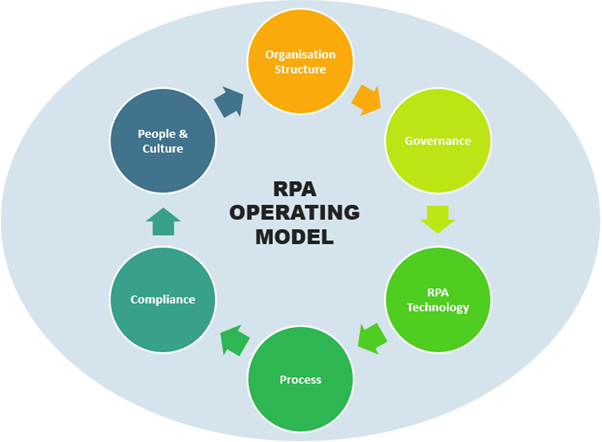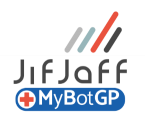JifJaff Nine Pillars of Automation – Pillar Two: Target Operating Model
The “JifJaff Nine Pillars of Automation” facilitates successful Internal Robotic Process Automation (RPA) delivery. The pillars provide RPA standardisation focused on self-sustainability, strategy, and continuous improvement. This week is focused on Pillar Two – Target Operating Model.
JifJaff is a specialist in building Client RPA COE (Centre of Excellence) through the building blocks of the “Nine Pillars of Automation”. Internal automation delivery is the long-term strategic approach to ensure RPA is embedded into the organisation, and automation ingrained into the culture of the organisation.
The JifJaff Nine Pillars of Automation provide the foundation, scalability, training, approach, structure & governance to deliver RPA internally through a robust framework. This approach provides a clear line of sight crucial to achieving business benefits, ROI and thereby tackling common RPA scalability challenges.
Scope of the RPA COE Target Operating Model
The key objective of establishing a well-defined Target Operating Model (TOM) is to maximise business value by harnessing the virtual workforce and internal organisational resources to best effect, whilst maintaining control over future costs and with stronger risk mitigation strategies.
RPA COE Target Operating Model – Key Questions
- Will your RPA services be built and delivered from a central expert team or a decentralised organization? Is your RPA team for build and run process closely positioned to Business or IT?
- What are the main roles and their responsibilities in your RPA Team (e.g. Business Analyst, RPA Developer, RPA Support)?
- What escalation paths and quality gates are needed?
- How does your RPA solution integrate into your existing IT landscape?
- How can a standardised demand process help you to structure your RPA pipeline? What processes are needed to achieve high benefits in execution of robots by reasonable effort in development and maintenance?
Operating Model Coverage Areas

- Organisation Structure: Deciding whether a centralised, de-centralised or federated model structure is the best fit for your organisation. Roles and Responsibilities of the team members fulfilling different requirements of the structure are paramount for effective functioning of the COE to accomplish the vision and mission it has set out to achieve.
- Governance:RPA is as much about proper change management as it is about the robot. The need for a governance board comprising various stakeholders to provide direction, guidance and support to the COE is paramount in ensuring change management can be effective.
- RPA Technology:It is imperative that the right RPA software is selected to ensure the chances of success are optimised. Building the right technology architecture stack for scale and implementation is as important for future scale and coverage.
- Process:Identifying the “right processes” for automation. It is important to start “right” as success breeds success. RPA is more about “Value” than it is about “Costs” – and it is important to amplify this “Value Target” as the outcome of creating a digital workforce. Do not underestimate the importance of documentation during design and implementation. Suitable process redesigns can help weed out inefficiencies right at the design stage.
- Compliance:Get your compliance and Info-sec teams involved in the program from the very beginning. These teams will need to be educated with the necessary processes created from both the compliance and info-sec perspectives to enable your “digital workforce” function effectively.
- People & Culture:Team selection plays a very important part – it can make or break your transformation agenda. Choosing the right team members, fitting in with your organisation structure goes a long way in making enterprise RPA programs successful. Your “RPA team” are your “transformation evangelists” – the change agents who drive the transformation agenda. Training becomes a core pillar.
What Will Happen Without An Operating Model?
Based on our experience companies without a defined RPA TOM behind their RPA program will have a hard time to achieve sustainable success as will often face issues in run and maintain of robots after a period of time.
The initial build of robots usually seems to work out fine, however, if the correct processes are not selected (process criteria & business ranking) a lack of RPA suitability can lead to a low utilisation of robots. Maintenance may also become an issue as the code of every robot is not based on agreed best practise standards and simply represents the individual programming style of each developer. This also presents difficulties in support, changes, patches, and upgrades.
How To Start An Operating Model?
The design and scope of the RPA Target Operating Model should be related to the size of your RPA solution. If the RPA team is a one-man show, you will need less regulations than working in an international or cross-organisational team with many different stakeholders.
Nevertheless, a basic foundation of the RPA TOM behind an RPA solution is key to scalability and sustainable success for any RPA project.
Only if roles, processes, and frameworks are clearly defined, will management have the option to control and steer its RPA COE.
KPIs need to be defined and anchored within development guidelines, measured during robot execution, and reported in a structured way back to the management, an understanding of real benefits and costs are possible.
